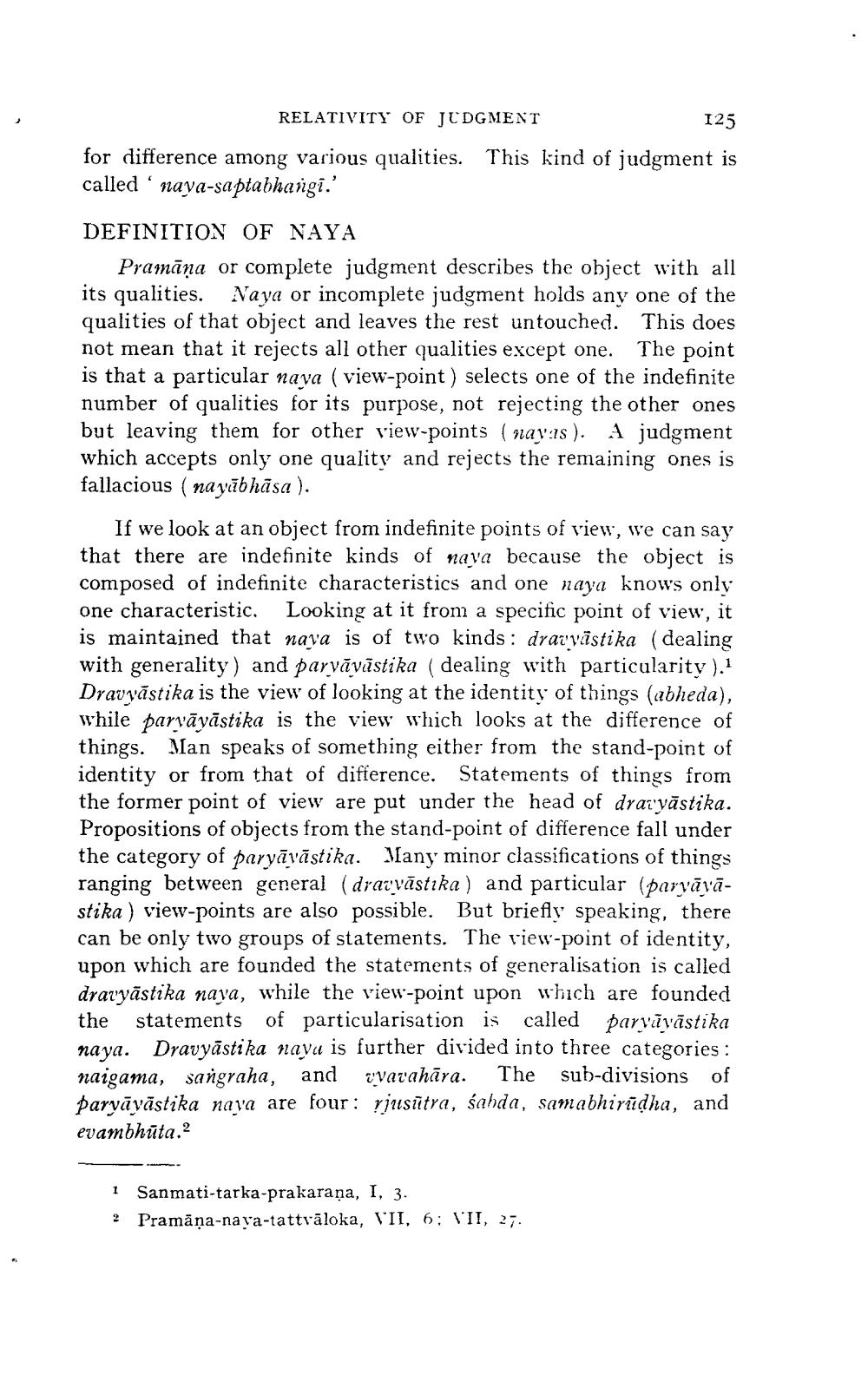________________
RELATIVITY OF JUDGMENT
125
for difference among various qualities. This kind of judgment is called naya-saptabhangi.'
"
DEFINITION OF NAYA
Pramana or complete judgment describes the object with all its qualities. Naya or incomplete judgment holds any one of the qualities of that object and leaves the rest untouched. This does not mean that it rejects all other qualities except one. The point is that a particular naya (view-point) selects one of the indefinite number of qualities for its purpose, not rejecting the other ones but leaving them for other view-points (nayas). A judgment which accepts only one quality and rejects the remaining ones is fallacious (nayābhāsa).
If we look at an object from indefinite points of view, we can say that there are indefinite kinds of naya because the object is composed of indefinite characteristics and one naya knows only one characteristic. Looking at it from a specific point of view, it is maintained that nava is of two kinds: dravyastika (dealing with generality) and paryāyāstika (dealing with particularity).1 Dravyastika is the view of looking at the identity of things (abheda), while paryāyāstika is the view which looks at the difference of things. Man speaks of something either from the stand-point of identity or from that of difference. Statements of things from the former point of view are put under the head of draryāstika. Propositions of objects from the stand-point of difference fall under the category of paryāyāstika. Many minor classifications of things ranging between general (dravyästika) and particular (paryāyāstika) view-points are also possible. But briefly speaking, there can be only two groups of statements. The view-point of identity, upon which are founded the statements of generalisation is called dravyāstika naya, while the view-point upon which are founded the statements of particularisation is called paryāyāstika naya. Dravyastika naya is further divided into three categories: naigama, sangraha, and vyavahāra. The sub-divisions of paryāyāstika naya are four: rjusūtra, śahda, samabhiruḍha, and evambhūta.2
1 Sanmati-tarka-prakarana, I, 3.
2 Pramāṇa-naya-tattvaloka, VII, 6: VII, 27.




